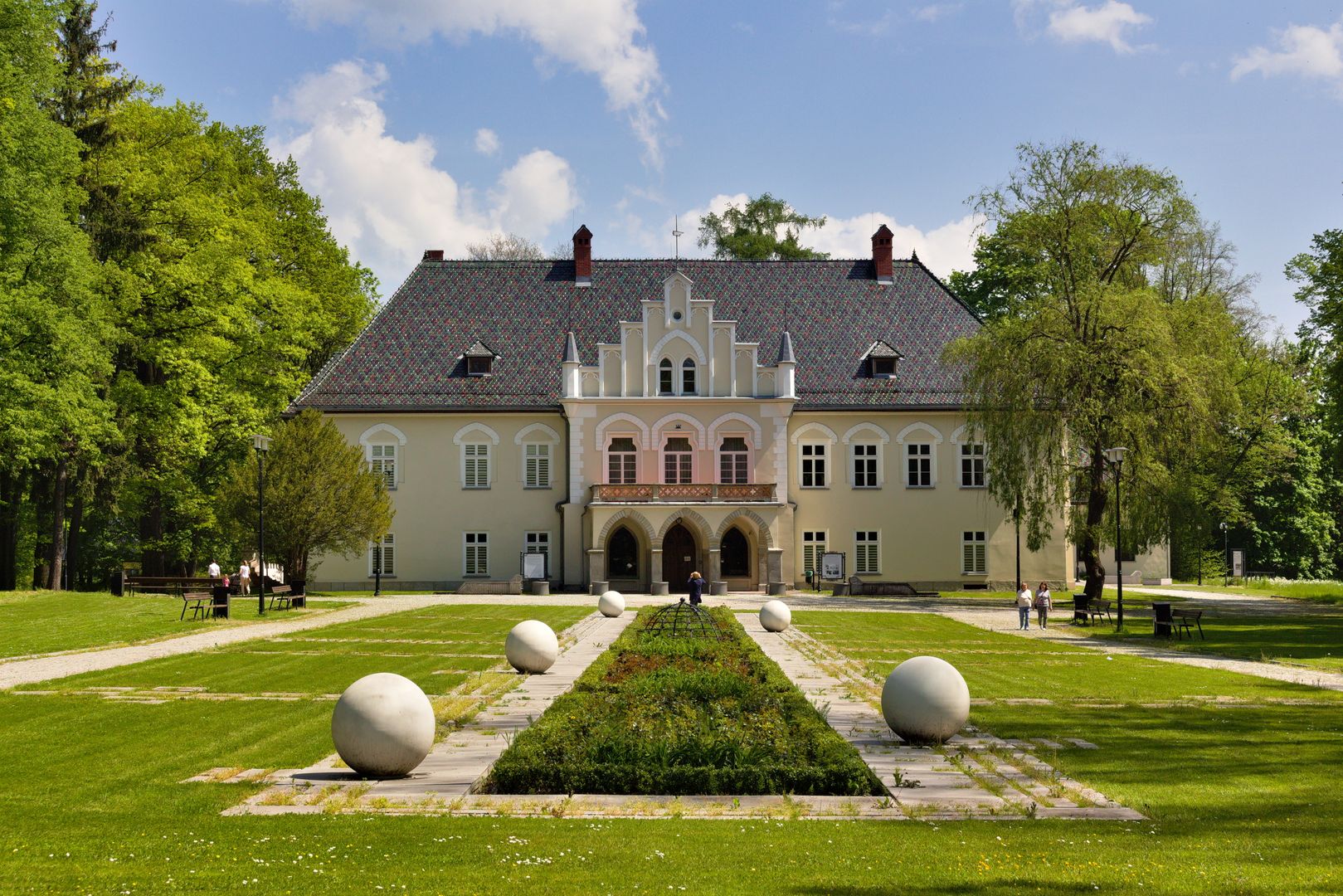Łodygowice Manor
7.52

Overview
The Łodygowice Manor, also known as the castle, is a historic site with former fortifications that once surrounded it in the form of earthworks and masonry bastions at the corners. It was built on the site of a wooden manor belonging to the Komorowski family, and its masonry form was initiated in 1629 by the castellan of Kraków, Jerzy Zbaraski. However, construction was halted after his death in 1631. Later, it passed into the hands of the Wiśniowiecki family, and after various historical upheavals, including military invasions in the 17th century, it was transformed into a small defensive residence by Stanisław Warszycki. It took the form of square fortifications with a moat, emphasizing its defensive character. After a long history of private owners, including the Klobus family, who thoroughly renovated it in the 19th century, the manor lost its defensive features. Today, it showcases Neogothic architecture, with a distinctive front risalit adorned with tracery and an unusual roof. After World War II, the building served various functions, including housing offices and cultural institutions. Between 2014 and 2019, it underwent comprehensive renovation, gaining new life as a center for cross-border cooperation and the seat of the Civil Registry Office. The manor is not only a witness to local history but also a place where culture and administration meet, attracting the attention of both residents and tourists. Interestingly, during World War II, it housed a German headquarters, and after the war, its interiors were briefly looted. Today, it represents a blend of history, architecture, and local culture, and its diverse history and transformations make it a significant landmark in the region.
Location
2025 Wizytor | All Rights Reserved